- Introduction to Japanese Apple Pastry Recipes
- Why Apples Are Important in Japanese Desserts
- Essential Ingredients for Japanese Apple Pastries
- Tools and Equipment for Making Apple Pastries
- Classic Japanese Apple Pastry Recipes
- Modern Twists on Japanese Apple Pastries
- Healthier Variations of Japanese Apple Pastries
- Step-by-Step Guide to Making Apple Dorayaki
- Secrets to Perfecting Japanese Apple Pie
- Common Mistakes When Making Apple Pastries
- Seasonal Variations in Japanese Apple Pastry Recipes
- How to Pair Japanese Apple Pastries with Beverages
- The Art of Plating and Presenting Apple Pastries
- Where to Find Authentic Japanese Pastry Ingredients
- Inspirations for Creating Your Own Apple Pastry Recipes
- The Role of Apples in Japanese Festive Desserts
- FAQs:
- Conclusion
Introduction to Japanese Apple Pastry Recipes
Japanese desserts are famous for their balance of flavors and beautiful presentation. In particular, Japanese apple pastry recipes stand out for their simplicity and unique taste. Whether you’re a beginner or an experienced baker, these treats are an excellent way to experience Japanese flavors at home. In this guide, you’ll try all the steps to create both traditional and modern apple pastries, while focusing on easy techniques and authentic ingredients.
To begin with, Japanese apple pastries highlight the natural sweetness of apples, balanced with subtle flavors like cinnamon or matcha. Furthermore, their preparation emphasizes simplicity, making them accessible to bakers of all skill levels. For example, apple dorayaki offers a classic choice, while matcha apple tarts showcase a more contemporary twist.
Moreover, the use of fresh, high-quality ingredients is key. In addition, mastering simple techniques such as precise slicing or proper dough preparation guarantee perfect results. By following this guide, you’ll not only learn to create delicious pastries but also appreciate the artistry and care that goes into Japanese baking. Ultimately, these recipes provide a delightful way to bring the taste and beauty of Japan into your home.
Try diverse recipes like the wildberry fruit smoothies.
Why Apples Are Important in Japanese Desserts
To understand why apples are so popular in Japanese desserts, it’s helpful to consider their natural flavor and texture. Apples, especially Fuji and Orin varieties, are favored because of their firm texture and sweet-tart balance. As a result, they are perfect for baking and blending with other ingredients.
In addition, apples harmonize with traditional Japanese flavors like matcha, yuzu, and red bean paste. By using apples in Japanese apple pastry recipes, chefs showcase the cultural emphasis on fresh, seasonal produce. Furthermore, these pastries offer a chance to enjoy the comforting flavors of autumn, which is the peak apple season.
Using a lotus seed honey drink recipe as inspiration, guarantee your tools are reduced for achieving professional results.
Essential Ingredients for Japanese Apple Pastries
When preparing Japanese apple pastry recipes, choosing the right ingredients is crucial. To begin, select apples like Fuji or Orin for their reliable sweetness and structure. Next, use light Japanese pastry flour to guarantee a delicate texture in your pastries.
In addition, other must-have ingredients include:
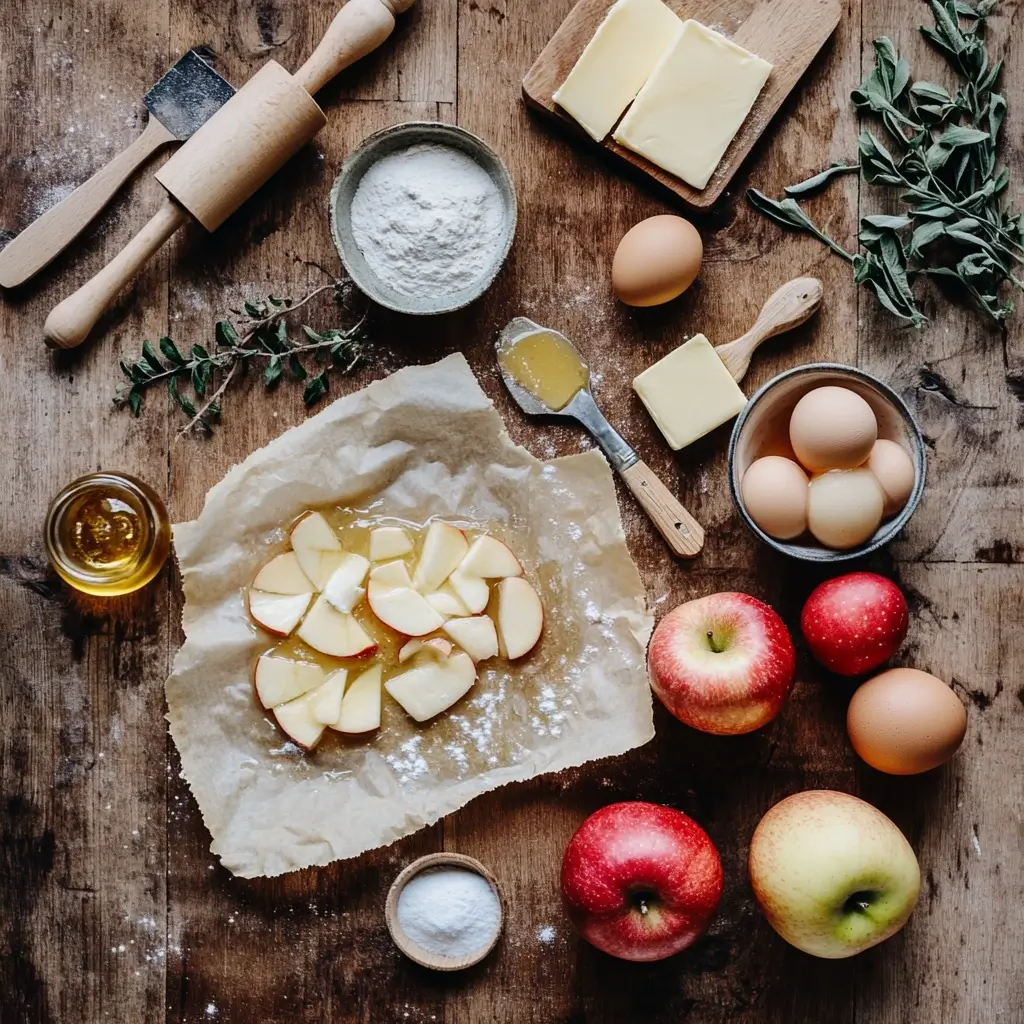
Butter: Unsalted butter adds richness to the dough.
Sugar: Granulated sugar or brown sugar for sweetness.
Eggs: Essential for structure and moisture.
Milk: Keeps batter and dough soft and smooth.
Spices: Cinnamon and nutmeg improve the apple’s natural flavor.
Japanese flavors: Include matcha, yuzu, or red bean paste for authentic taste.
To sum up, high-quality ingredients make a noticeable difference. Each component contributes to the distinct taste and texture of these beloved recipes.
Tools and Equipment for Making Apple Pastries
Using the proper tools is essential to simplify the process of making Japanese apple pastry recipes. First, guarantee you have a sturdy rolling pin for rolling out pie crusts or pastry dough. Second, invest in a mandoline slicer for consistent, thin apple slices.
Other important tools include:
- Mixing bowls: For combining wet and dry ingredients separately.
- Pastry cutter: Useful for shaping dough evenly.
- Baking pans: Tart pans or pie dishes are great for apple desserts.
- Non-stick pans: Ideal for cooking dorayaki or taiyaki batter.
By organizing these tools in advance, you’ll save time and gurantee that each pastry turns out perfectly shaped and baked.
Classic Japanese Apple Pastry Recipes
When exploring Japanese apple pastry recipes, starting with the classics is always a good idea. For example, apple dorayaki is a simple yet flavorful option, featuring fluffy pancakes filled with stewed apples and red bean paste.
Similarly, yaki ringo, or baked apples, highlights the natural sweetness of apples, improved with a drizzle of honey and a sprinkle of cinnamon. Lastly, Japanese apple pie offers a flaky crust paired with lightly sweetened apple filling, often complemented by a subtle hint of soy sauce for extra depth.
These traditional recipes are not only delicious but also a great way to understand the fundamentals of Japanese pastry-making.
Modern Twists on Japanese Apple Pastries
As baking trends evolve, so do Japanese apple pastry recipes. Today, many chefs incorporate modern ingredients and techniques to give these desserts a fresh twist. For instance, matcha apple tarts combine thinly sliced apples with green tea custard for a vibrant and unique flavor.
In addition, apple mochi cake offers a chewy, gluten-free alternative by using rice flour as the base. Another creative idea is caramelized apple taiyaki, where caramelized apples replace the usual sweet bean filling. These updated recipes demonstrate how tradition and creativity can blend harmoniously.
Healthier Variations of Japanese Apple Pastries
If you’re looking for lighter options, there are many ways to adjust Japanese apple pastry recipes. First, consider replacing refined sugar with natural alternatives like honey or maple syrup. Second, use whole wheat or almond flour instead of white flour to add fiber and nutrients.
Moreover, healthier substitutions like coconut oil or Greek yogurt can reduce the overall fat content without compromising flavor. Another option is to steam apples instead of caramelizing them to cut down on added sugar. By making these changes, you can enjoy guilt-free versions of these delightful treats.
Step-by-Step Guide to Making Apple Dorayaki
Making apple dorayaki is easier than it looks. To begin, prepare a batter by whisking together eggs, sugar, and flour with a bit of water. Afterward, cook small pancakes in a non-stick pan until golden.
Next, prepare the filling by stewing diced apples with a touch of sugar and cinnamon. Finally, assemble the dorayaki by spreading the apple filling between two pancakes. For best results, serve the finished dorayaki warm. This simple process makes apple dorayaki one of the easiest apple pastry recipes Japanese-style to try at home.
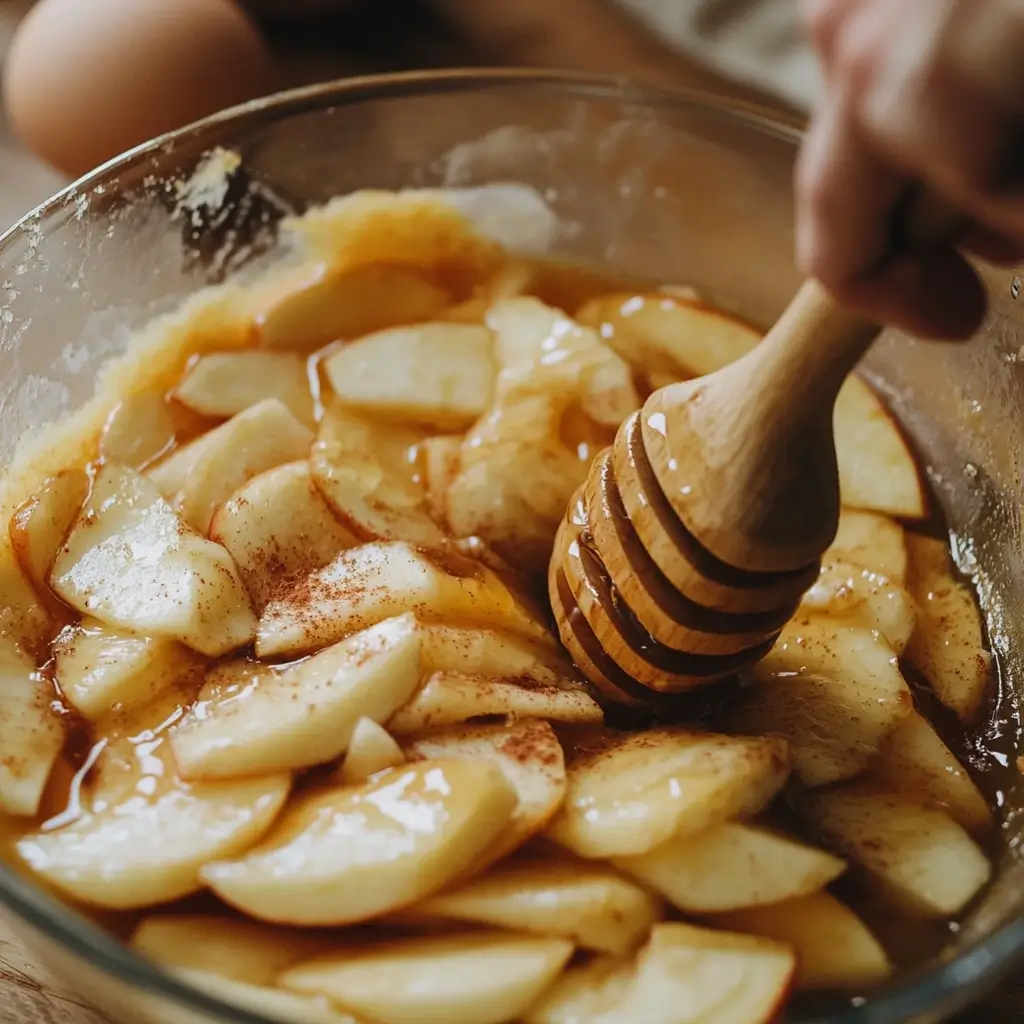
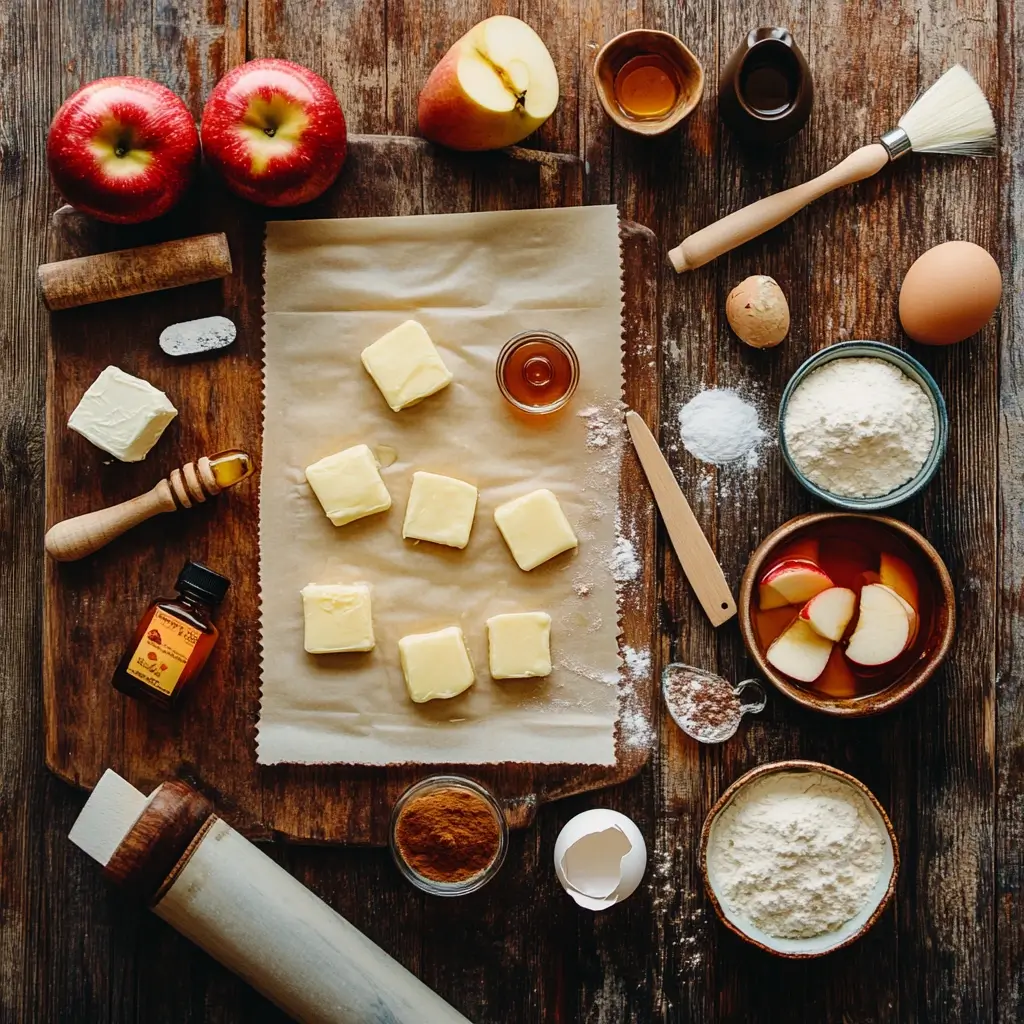
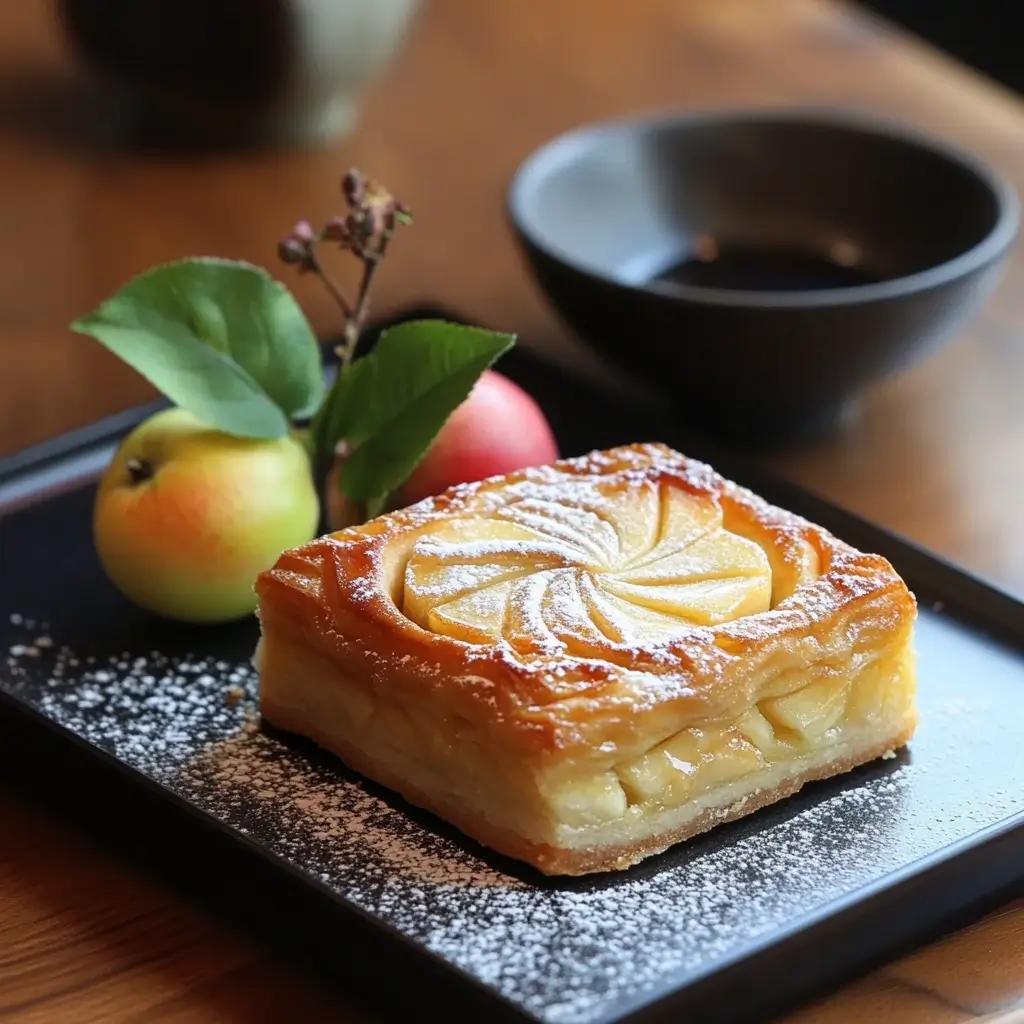
Secrets to Perfecting Japanese Apple Pie
To master Japanese apple pastry recipes like apple pie, focus on a few key details. First, always use chilled butter when preparing the crust. This step guarntees a flaky, tender texture. Second, pre-cook your apple filling to avoid excess moisture, which can make the crust soggy.
Lastly, balance the sweetness of the apples with a hint of acidity, such as lemon juice or a small amount of soy sauce. These small but important steps will guarantee your pie is flavorful and well-structured every time.
Common Mistakes When Making Apple Pastries
Even experienced bakers can encounter challenges when preparing Japanese apple pastry recipes. One common mistake is overmixing the dough, which can lead to a dense, tough texture. To avoid this, mix until just combined.
Additionally, be sure to preheat your oven, as uneven heat can result in undercooked or overbaked pastries. Another frequent issue is using too much filling, which can cause the pastry to break. By paying attention to these details, you’ll increase your chances of success with every recipe.
Seasonal Variations in Japanese Apple Pastry Recipes
Seasonality plays a big role in Japanese apple pastry recipes. For example, in spring, you can pair apples with cherry blossoms to create a light floral flavor. During summer, citrus fruits like yuzu add a refreshing contrast to apple tarts.
In autumn, warm spices like cinnamon and nutmeg complement the natural sweetness of apples. For winter, chestnuts can add a rich, comforting element to pastries. These seasonal adjustments keep your desserts fresh and exciting throughout the year.
How to Pair Japanese Apple Pastries with Beverages
Choosing the right drink can improve the flavors of Japanese apple pastry recipes. For instance, green tea is a traditional choice that balances the sweetness of apple desserts. On the other hand, coffee pairs well with buttery pastries like apple pies, offering a satisfying contrast.
For a more unique option, try sake, which complements the subtle umami notes in certain recipes. By experimenting with different pairings, you can improve the experience of enjoying these pastries.
The Art of Plating and Presenting Apple Pastries
Presentation is a key part of Japanese apple pastry recipes. To make your desserts stand out, use minimalist plates to keep the focus on the pastry itself. Additionally, garnishes like edible flowers, powdered sugar, or a small drizzle of caramel can add visual interest.
Moreover, serving a complementary sauce alongside the pastry, such as vanilla cream or matcha custard, can make the dish feel more refined. These simple techniques guarantee your desserts look as good as they taste.
Where to Find Authentic Japanese Pastry Ingredients
To achieve authentic flavors in Japanese apple pastry recipes, it’s important to source the right ingredients. For specialty items like matcha or red bean paste, check Japanese grocery stores or online retailers. Furthermore, visit local farmers’ markets for fresh, high-quality apples.
By choosing the best ingredients, you’ll create desserts that taste true to their Japanese roots.
Inspirations for Creating Your Own Apple Pastry Recipes
Once you’ve mastered the basics, feel free to get creative with your Japanese apple pastry recipes. For example, you might try adding unexpected spices like cardamom or ginger to improve the apple’s flavor. Alternatively, experimenting with different flours, such as buckwheat, can create unique textures.
Combining apples with non-traditional ingredients like cheese or sesame seeds is another way to develop exciting new recipes. Ultimately, the possibilities are endless, allowing you to craft pastries that reflect your personal style.
The Role of Apples in Japanese Festive Desserts
Apples play a special role in Japanese celebrations, symbolizing health and happiness. For example, during New Year’s festivities, Japanese apple pastry recipes like apple taiyaki and baked apple mochi cakes are popular. Not only do their bright colors and sweet flavors make them look appealing, but they also add a cheerful touch to the celebrations. In particular, these pastries are enjoyed for their connection to good fortune and joy, matching the festive mood.
In addition, apples are very versatile, making them perfect for both traditional and modern recipes. For instance, caramelized apple yokan highlights simple, traditional flavors, while apple and matcha cakes bring a modern twist. Furthermore, these pastries work well for different types of gatherings, from big events to small family dinners.
Also, apple pastries are made with care, showing the skill and beauty of Japanese baking. By using fresh apples and flavors like honey or kinako, these desserts become even more special. As a result, they bring people together, whether shared at the table or given as gifts. In the end, apple pastries combine tradition and creativity, making them a key part of Japanese celebrations.
FAQs:
What is another name for apple pastry?
Apple pastries are also called apple turnovers, apple tarts, apple strudels, or apple pies. In Japan, you might find names like apple dorayaki or Japanese apple pie, which are local versions of these desserts.
Are Shizuka apples good for pie?
Yes, Shizuka apples are great for pies. They are sweet and crisp, making them perfect for baking. They keep their shape well during cooking, giving you a firm and tasty pie filling.
What apples are best for pastries?
The best apples for pastries are those that are sweet, slightly tart, and hold their shape when baked. Common choices include Fuji, Granny Smith, Honeycrisp, Orin, and Shizuka apples.
Why is it called Napoleon pastry?
The Napoleon pastry, also called mille-feuille, means “a thousand layers” in French. It is named for its many thin pastry layers and may have been inspired by a similar dessert from Naples, Italy. It has no link to Napoleon Bonaparte.
Conclusion
Japanese apple pastry recipes are a wonderful mix of traditional and modern flavors. For example, classics like apple dorayaki bring the comforting taste of traditional Japanese sweets, while matcha apple tarts offer a fresh, creative twist. To begin with, using fresh, seasonal ingredients like crisp apples guarantees the best flavor and texture. Additionally, simple techniques like careful mixing and precise baking help make these pastries just right.
Moreover, how you present the pastries matters. For instance, adding a drizzle of honey or a sprinkle of powdered sugar can make them look and taste even better. At the same time, these pastries are versatile. Whether you make them for tea time, a holiday, or a family treat, they can fit any occasion.
On top of that, these recipes let you be creative. For instance, you can add Japanese flavors like yuzu or black sesame to make something unique. In the end, sharing these pastries with loved ones not only brings a taste of Japan to your home but also creates moments of joy and togetherness. All in all, Japanese apple pastries are an easy and delicious way to enjoy a mix of old and new flavors.
To improve the flavors, incorporating Japanese-specific elements such as matcha or yuzu adds authenticity, much like the vibrant flavors in a barbie cake guide.

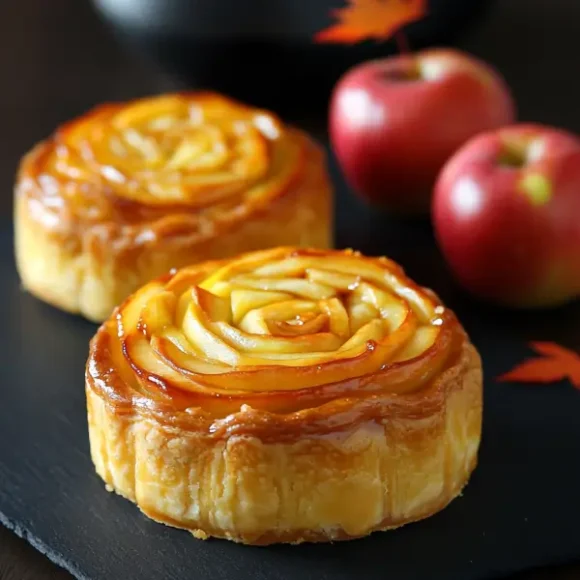
1 thought on “Japanese Apple Pastry Recipes: Easy Tips & Delicious Variations”